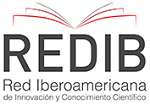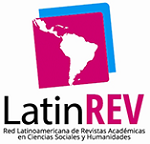3D modeling applied to plants in the nursery of the University Francisco de Paula Santander Ocaña.
DOI:
https://doi.org/10.15649/2346030X.724Keywords:
APP, Botanical Garden, 3D Modeling, System, Technology, Smart UniversityAbstract
The Jorge Enrique Quintero Arenas University Botanical Garden was created with the mission of conserving the dry forest ecosystem and the types of vegetation and flora present in the northeast of Colombia. From new technologies that can be integrated without affecting the environment and generate various changes in the way of learning, solutions are proposed for continuous improvement, which in the end is done in favor of sustainability, quality of life and an intelligent botanical garden. This article aims to show the aspects of 3D modeling from what was developed in a previous project on a mobile application. In order to innovate in this APP and achieve a more interactive application with the user, some functionalities were developed where augmented reality is implemented as a technology that will allow the virtual reality to be brought to reality where users will be able to expand their knowledge about the plants studied in the botanical garden with multimedia material. In the development process and based on the existing mobile application for the intelligent nursery, the functionalities are proposed under the following scheme, the image recorded by the cell phone camera is analyzed in search of a graphic pattern which for our case was used the existing QR code in each of the plants under study, by the nursery researchers, the same used for the administration of the different interventions that are made to each of the plants. Thanks to this QR code, the administrator can easily identify the résumé of each plant, speeding up day-to-day work such as pest control, follow-up of deaths, transplants, and donations that may be presented.
References
C.D. Ward, C.M. Parker y C.M. Shackleton, “The use and appreciation of botanical gardens as urban green spaces in South Africa,” Urban For. Urban Green., 2010, doi: 10.1016/j.ufug.2009.11.001.
M.H.D.A. Barkoosaraei y S. Moshiri, “Designing of Genow Botanical Garden with Sustainable Architecture Approach,” J. Hist. Cult. Art Res., vol. 6, no. 4, p. 1211, 2017, doi: 10.7596/taksad.v6i4.1140.
F. Morari y L. Giardini, “Irrigation automation with heterogeneous vegetation: The case of the Padova botanical garden,” Agric. Water Manag., 2002, doi: 10.1016/S0378-3774(01)00192-5.
Inderjit y K.M.M. Dakshini, “On laboratory bioassays in allelopathy,” Bot. Rev., 1995, doi: 10.1007/BF02897150.
W.J. Beal, “Botanic Gardens,” Bot. Gaz., 1897, doi: 10.1086/327464.
A.R. Sfar, “Identi fi cation of Plants from Multiple Images and Botanical IdKeys,” Acm, pp. 191–198, 2013, doi: 10.1145/2461466.2461499.
J. Mackowski, “Missouri Botanical Garden,” in View from a Temporary Window, 2017.
S. White y S. Feiner, “Exploring interfaces to botanical species classification,” Proc. 28th Int. Conf. Ext. Abstr. Hum. factors Comput. Syst. - CHI EA ’10, p. 3051, 2010, doi: 10.1145/1753846.1753916.
T. Kajiyama, “Botanical data retrieval system supporting discovery learning,” Proc. 1st ACM Int. Conf. Multimed. Retr. - ICMR ’11, pp. 1–7, 2011, doi: 10.1145/1991996.1992032.
B.M. Thiers, M.C. Tulig y K.A. Watson, “Digitization of The New York Botanical Garden Herbarium,” Brittonia, vol. 68, no. 3, pp. 324–333, 2016, doi: 10.1007/s12228-016-9423-7.
S. Prasad, K.M. Kudiri y R.C. Tripathi, “Relative sub-image based features for leaf recognition using support vector machine,” ACM Int. Conf. Proceeding Ser., pp. 343–346, 2011, doi: 10.1145/1947940.1948012.
L. Oliveros-Martín-Varés, “Identificación de competencias: una estrategia para la formación en el Espacio Europeo de Educación Superior,” Rev. Complut. Educ., vol. 17, no. 1, pp. 101–120, 2006, doi: 10.5209/RCED.16737.
G.E. Schatz, “Taxonomy and Herbaria in Service of Plant Conservation: Lessons from Madagascar’s Endemic Families,” Ann. Missouri Bot. Gard., 2002, doi: 10.2307/3298559.
EIMER AMAYA-AMAYA y C.A.V. GARCIA, “Plan Operativo JARDÍN BOTÁNICO ‘JORGE ENRIQUE QUINTERO ARENAS.’” ocaña, p. 70, 2017.
L. Santos-Jaimes y D. Rico-Bautista, “IPV6 en la universidad de pamplona: Estado del arte,” Sci. Tech., 2007, doi: 10.22517/23447214.4139.
D. Rico-Bautista, Y.C. Medina-Cárdenas y L.M. Santos Jaimes, “Ipsec De Ipv6 En La Universidad De Pamplona,” Sci. Tech., vol. 2, no. 39, pp. 320–325, 2008, doi: http://dx.doi.org/10.22517/23447214.3239.
S.A. Alvernia-Acevedo y D. Rico-Bautista, “Análisis de una red en un entorno IPV6: Una mirada desde las intrusiones de red y el modelo TCP/IP,” Rev. Colomb. Tecnol. Av., vol. 1, no. 29, May 2017, doi: 10.24054/16927257.v29.n29.2017.2490.
D. Rico-Bautista, J. Rojas-Osorio y Y. Medina-Cárdenas, “Pentesting empleando técnicas de ethical hacking en redes IPv6,” Rev. Ingenio UFPSO, vol. 11, no. 1, pp. 79–96, 2016.
J. Lobo-Contreras y D. Rico-Bautista, “Implementación de la seguridad del protocolo de internet versión 6,” Gerenc. Tecnológica Informática, vol. 11, no. 29, pp. 35–46, 2012.
E. Martínez-Salas y C.H. Ramos, “Biodiversidad de Pteridophyta en México,” Rev. Mex. Biodivers., 2014, doi: 10.7550/rmb.31827.
B. Stegelmeier, “Book Review: A Guide to Poisonous House and Garden Plants,” Vet. Pathol., 2008, doi: 10.1354/vp.45-1-112.
G.B. Nejma, P. Roose, D. Marc, J. Gensel y G.M. Amine, “Design and Development of Semantic Application for Communities,” in 2014 9th International Workshop on Semantic and Social Media Adaptation and Personalization, 2014, pp. 54–59, doi: 10.1109/SMAP.2014.34.
R. Albarracin-Caro, “Revisión y georreferenciación de registros Biológicos de Plantas Medicinales y Alimenticias Nativas,” 2017.
B. Ospina, “PLAN DE MANEJO AMBIENTAL DEL JARDÍN BOTÁNICO Y DE LOS BOSQUES DE LA UNIVERSIDAD TECNOLÓGICA DE PEREIRA,” Pereira, 2011.
J.C. Lendemer y R.C. Harris, “The New York Botanical Garden Lichen Herbarium: A unique resource for fungal biodiversity research and education,” Brittonia, vol. 68, no. 3, pp. 334–340, 2016, doi: 10.1007/s12228-016-9424-6.
C.P. Dunn, “Biological and cultural diversity in the context of botanic garden conservation strategies,” Plant Divers., vol. 39, no. 6, pp. 396–401, 2017, doi: 10.1016/j.pld.2017.10.003.
K.S. Walter, Computerized plant record systems for botanic gardens. ACADEMIC PRESS LIMITED, 1991.
L. Velho y F. Groetaers, “Jobim Botanic,” SIGGRAPH Asia 2014 Mob. Graph. Interact. Appl., pp. 10:1--10:6, 2014, doi: 10.1145/2669062.2669065.
T. Martins, P. Machado y A. Rebelo, “The garden of virtual delights: virtual fauna for a botanical garden,” Spec. Interes. Gr. Comput. Graph. Interact. Tech. Conf. SIGGRAPH ’13, Anaheim, CA, USA, July 21-25, 2013, Poster Proc., p. 26, 2013, doi: 10.1145/2503385.2503413.
K.E.S.C.L. Wassenberg y M.A. Goldenberg, “Benefits of botanical garden visitation: A means-end study,” Urban For. Urban Green, vol. 14, 2015.
M.H.A.R. Danakorn-Nincarean, M. Bilal-Alia, N.D. Abdul-Halim, “Mobile Augmented Reality: The Potential for Education,” 2013.
I.A.S., J.M. Mota, I. Ruiz-Rube y J. M. Dodero, “Augmented reality mobile app development for all. Computers & Electrical,” 2018.
J. Cabero-Almenara y J. Barroso-Osuna, “Los escenarios tecnológicos en Realidad Aumentada (RA): posibilidades educativas en estudios universitarios,” Carozza, Tingdahl y Gool, vol. 47(3), pp. 327–336, 2011, [Online]. Disponible en: http://www.
R.I.D.E. Deportes, “Colectivos didáctica de las actividades en el medio natural mediante m-learning y realidad aumentada en el grado de magisterio en educación primaria didactic on outdoor activities through m-learning and augmented reality in the teaching in primary educati,” pp. 34–42.
J. Barroso-Osuna, J. Cabero-Almenara y J.J. Gutiérrez-Castillo, “La producción de objetos de aprendizaje en realidad aumentada por estudiantes universitarios: Grado de aceptación de esta tecnología y motivación para su uso,” Rev. Mex. Investig. Educ., vol. 23, no. 79, pp. 1261–1283, 2018.
X.R. He, Z. Wu y L. Li, “When art meets tech: The role of augmented reality in enhancing museum experiences and purchase intentions,” 2017.
L.M. Coelho y A. Costa, “No TitleThe integration of augmented reality and the concept of sticker album collection for informal learning in museums.,” 2017.
B. Sánchez-Torres, J.A. Rodríguez-Rodríguez, D.W. Rico-Bautista y C.D. Guerrero, “Smart Campus: Trends in cybersecurity and future development,” Rev. Fac. Ing., vol. 27, no. 47, Jan. 2018, doi: 10.19053/01211129.v27.n47.2018.7807.
D. Rico-Bautista, Y. Medina-Cárdenas y C.D. Guerrero, “Smart University: A Review from the Educational and Technological View of Internet of Things,” in Advances in Intelligent Systems and Computing, 2019, pp. 427–440.
X. Zhu y Y. Lin, “ZigBee implementation in intelligent agriculture based on Internet of Things,” 2012, doi: 10.2991/emeit.2012.408.
I. Dumitrache, I.S. Sacala, M.A. Moisescu y S.I. Caramihai, “A Conceptual Framework for Modeling and Design of Cyber-Physical Systems,” Stud. INFORMATICS Control, vol. 26, no. 3, pp. 325–334, Sep. 2017, doi: 10.24846/v26i3y201708.
E. Barrientos-Avendaño, D. Rico-Bautista, L. Coronel-Rojas, y F. Cuesta-Quintero, “Granja inteligente: Definición de infraestructura basada en internet de las cosas, IpV6 y redes definidas por software,” Rev. Ibérica Sist. e Tecnol. Informação, pp. 183–197, 2018, [Online]. Available: https://search.proquest.com/openview/8230e23d4bc7e38273365da979b51a5a/1?pq-origsite=gscholar&cbl=1006393.
D. Rico-Bautista, C.D. Guerrero, Y. Medina-Cárdenas y A. García-Barreto, “Analysis of the potential value of technology: Case of universidad Francisco de Paula Santander Ocaña,” RISTI - Rev. Iber. Sist. e Tecnol. Inf., no. E17, pp. 756–774, 2019.
B. Foundation, “blender.org - Home of the Blender project - Free and Open 3D Creation Software,” blender.org. 2018, doi: 10.1002/adfm.201304036.
C. Xiao y Z. Lifeng, “Implementation of mobile augmented reality based on Vuforia and Rawajali,” 2014, doi: 10.1109/ICSESS.2014.6933713.
Unity Technologies, “Game engine, tools and multiplatform,” Unity Technologies, 2016. .
J.F. DiMarzio, “Beginning Android® Programming with Android Studio”, 2016.
E. Barrientos-Avendaño, D. Rico-Bautista, L.A. Coronel-Rojas, and F.R. Cuesta-Quintero, “Jardín botánico: Prototipo desoftware para la gestión y divulgación de plantas nativas basado en código QR y realidad aumentada,” Rev. Ibérica Sist. e Tecnol. Informação, vol. N° e17, no. June, p. 16, 2019.
Vuforia, “SDK Download | Vuforia Developer Portal,” developer.vuforia.com, 2018. .
L.A. Coronel-Rojas, D. Rico-Bautista, F. Cuesta-Quintero, E.A.P. Villadiego y E. Barrientos-Avendaño, “Software movil para reconocimiento, seguimiento y control de las plantas del vivero inteligente de la universidad francisco de paula santander ocaña,” Rev. Colomb. Tecnol. Av., vol. Volumen 1, 2019.
Downloads
Published
How to Cite
Issue
Section
Altmetrics
Downloads
License
The journal offers open access under a Creative Commons Attibution License

This work is under license Creative Commons Attribution (CC BY 4.0).











